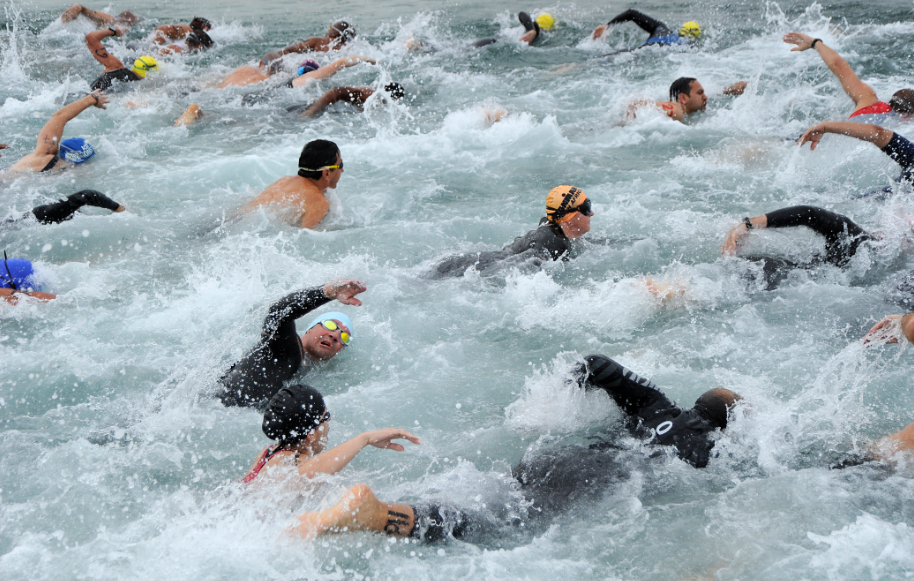There's something primal concerning swimming in open water. For most of us, swimming pool makes up the bulk of our swimming practice. For triathletes, it is vital to get in open water swimming practice whenever you have a chance. However, when doing your open swimming, you should note the following points.Also Read: How long are triathlons
 Sighting
Sighting
Even if you are swimming in clear sea water, there are no lines to guide you like in the case of swimming pools. This makes sighting a vital skill when in open waters. Sighting here refers to looking ahead of you with eyes above the water level. The aim of sighting is to know where you are in water relative to where you are going. You can sight before you turn the head to breathe. This should form a smooth movement as you push slightly with your arm to bring eyes above the water surface level. Sighting too often slows you down since your hips will drag you into the water. Also, little sighting will make you waste much of your time swimming off course. You can sight once for every eight (8) strokes.Also Read: What does the lens do
Equipment
Wetsuits are a must in some events. With their buoyancy, many swimmers prefer to use them in races. It takes a while for some to get used to it but it's also of great essence to have a swimming suit that fits well and does not restrict any movement in the water. In a triathlon, you can whip your wetsuit off with ease during the transition.
Key Principles of Open Water Drafting
Cyclists, race car drivers and open water swimmers all know the benefits of drafting and positioning. As swimmers take off in an open water race or triathlon and go from buoy to buoy, they create a conga line with seemingly everyone chasing after the person in front of them. Where ideally should you position yourself?Also Read: What is polarized eyewear
 Techniques to Develop Your Swimming in Open Water Skills
Techniques to Develop Your Swimming in Open Water Skills
Here some open water swimming technique....1 .Learn to breathe bilaterally: It can be a major challenge for people who have a dominant breathing side. However, bilateral breathing can help in straightening your swimming line. This in turn saves time from swimming off course or sighting more often. Also, it is useful when you re swimming close to another person, and you get splashed on the face. Nobody enjoys swallowing seawater, so in case you've ingested the water, you can alter your breathing patterns.2 .Don't fight the water : If you re swimming in choppy or rough water, it s good that you practice a particular set of skills. Always, learn to keep smooth & relaxed strokes. By working with natural forces, you will save yourself some energy and time.3 .Nutrition : It is true that a portion of our body fat helps to keep us warm but with the wetsuits to do that task for us, I am afraid we can't use swimming as an excuse to eat junk food. However, Swimming in open water is calorie consuming stuff. You can go for slow digesting carbs before a swim and quicker digestible carbohydrates to help your body recover after swimming.Also Read: What do you do in Spyglass Eyewear on Spy Island The only way you can become a good triathlete swimmer is to swim regularly in open water environments. It is as simple as that but always note that it is of great essence and practice to go swimming in open water and use prescription sunglasses accompanied by your partner for safety measures!Also Read: What is a sprint triathlon To learn more triathlon tips and tricks check out these articles on sprint triathlon times , beginner's triathlon training plan , and triathlon distances .







